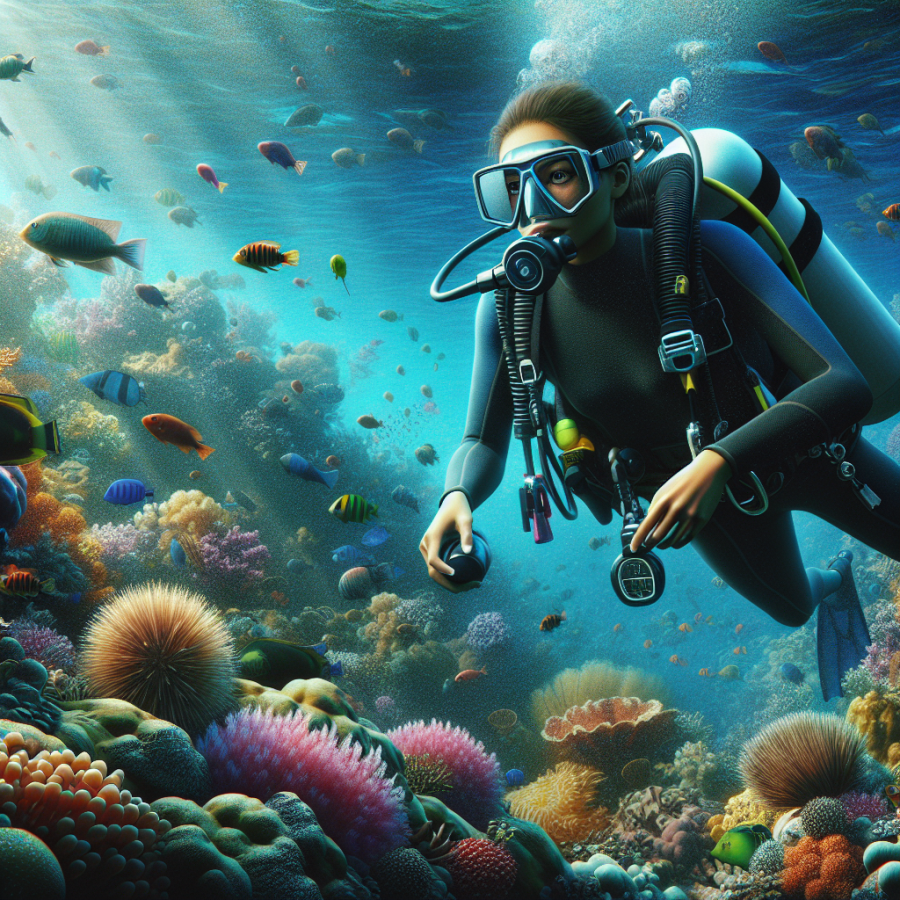Discovering Exotic Underwater Habitats: Popular Destinations for Scuba Diving
Scuba diving provides the unique opportunity of exploring a world less known and full of exciting discoveries. The underwater kingdom is vibrant, wondrous, and filled with life forms that captivate the imagination. In order to truly appreciate the beauty of the ocean, you need to explore these underwater landscapes. Here are some popular scuba diving destinations that can help you discover exotic underwater habitats.
The Great Barrier Reef, Australia, is one of the most iconic diving spots around the globe. It is the most extensive reef system worldwide, with over 2,900 individual reefs and 900 islands spread over 2,300 kilometers. Diving in these warm waters, you'll encounter a colorful and diverse ecosystem, home to countless fish species, turtles, dolphins, sharks, and rays, not to mention the spectacular coral formations.
The Red Sea is another treasure trove for scuba divers. Known for its crystal-clear waters, the sea offers visibility of up to 40 meters, allowing divers to view vibrant corals, various species of fish, and intriguing shipwrecks. Among the famous dive spots in the Red Sea, Ras Mohammed National Park and Thistlegorm Wrecks stand out.
Palau is a paradise for divers with daring spirits. Located in the Pacific Ocean, this archipelago boasts an abundant marine life, stunning coral formations, and historical World War II wrecks. The most popular dive spot here is the Jellyfish Lake- a marine lake filled with millions of stingless jellyfish.
The islands of the Maldives are another scuba diving gem. Famous for its extensive coral reefs, colorful fish, clear waters, and pleasant warm temperatures, the Maldives offers numerous unique diving opportunities. Divers can explore the vibrant reefs, swim with manta rays, whale sharks, and enjoy breathtaking underwater scenes.
Indonesia is home to some of the world's most diverse marine life. Pulau Weh on the northwestern tip offers scenic underwater landscapes, abundant marine life, and great visibility. For the fearless divers, the current-swept Penida Island is the place to spot manta rays and the elusive oceanic sunfish or mola mola.
Finally, the Galapagos Islands offer a unique diving experience, renowned for the possibility of seeing larger marine species. Divers can navigate through a current-swept underwater volcanic world, lush with penguins, marine iguanas, sea lions, whales, and a plethora of fishes.
Read also:
Guardians of the Waves: Inside the World of Surf Life Saving
Essential Gear and Safety Measures for Scuba Diving
Scuba diving is an advanced aqua sport that requires not only technical skills but also specific gear and safety measures. When it comes to exploring the underwater world, the correct equipment and protective precautions are critical. They ensure a safe and enjoyable diving experience.
For starters, let's discuss the essential gear needed for scuba diving. These would include a diving mask, snorkel, diving fins, a wetsuit or a drysuit, a buoyancy compensating jacket (BCD), a scuba regulator, pressure and depth gauge, and a diving cylinder.
A diving mask allows scuba divers to see underwater. It covers the eyes and nose and includes a mouthpiece—the snorkel. The snorkel enables the diver to breathe comfortably above the surface of the water. Diving fins help divers swim efficiently underwater, providing them with better control and reducing their energy usage.
A wetsuit or a drysuit keeps the divers warm underwater and protects them from hypothermia. Particularly, a dry suit is sealed and inflatable, providing insulation by ensuring that the diver stays dry.
A buoyancy compensating jacket (BCD) is donned over the wetsuit. It serves as a bearing structure for your equipment and helps balance the diver's weight. The BCD also has an inflatable bladder that can be filled or emptied of air to attain neutral, positive, or negative buoyancy.
A scuba regulator reduces the high-pressure air in your scuba cylinder to match the pressure underwater. It supplies the air in a way that you can breathe it naturally, despite your depth or the amount remaining in the cylinders. The pressure and depth gauges will provide the necessary data for your dive, such as your depth, your air consumption rate, and how much air is left in your tank.
In terms of safety measures, scuba diving has a laundry list of precautions. It's always essential to check gear before diving, adhere to proper diving practices, limit dive time and depth, and learn to control and manage buoyancy.
Equipment check is vital for a safe scuba diving experience. Any minor negligence or malfunction in the gear can endanger the diver's life. Before diving, ensure that all equipment, including the mask, BCD, regulator, and cylinder, are in perfect working condition.
Adhering to proper diving practices and understanding diving signs and signals enhances teamwork and coordination, ensuring a safer diving experience.




